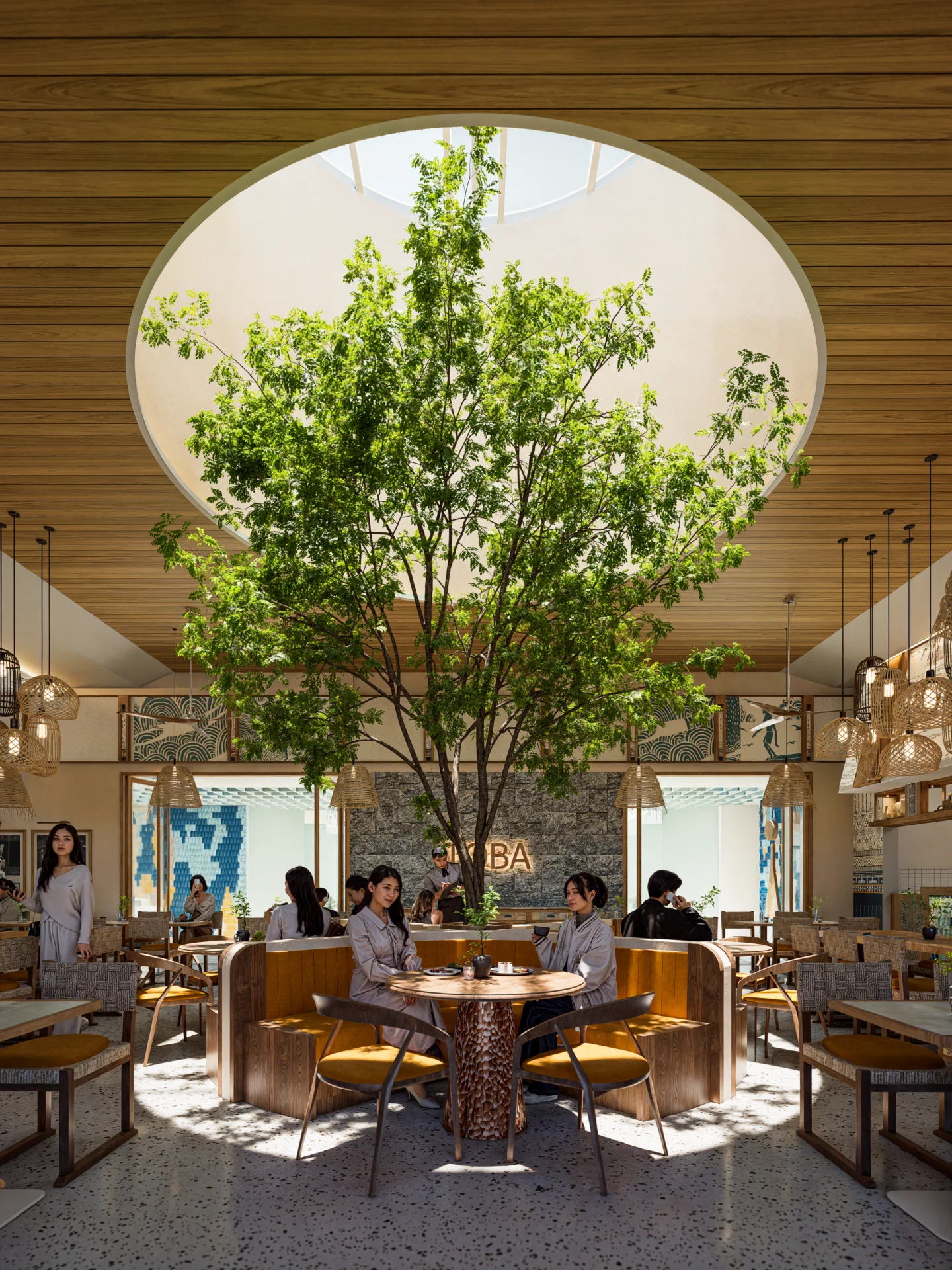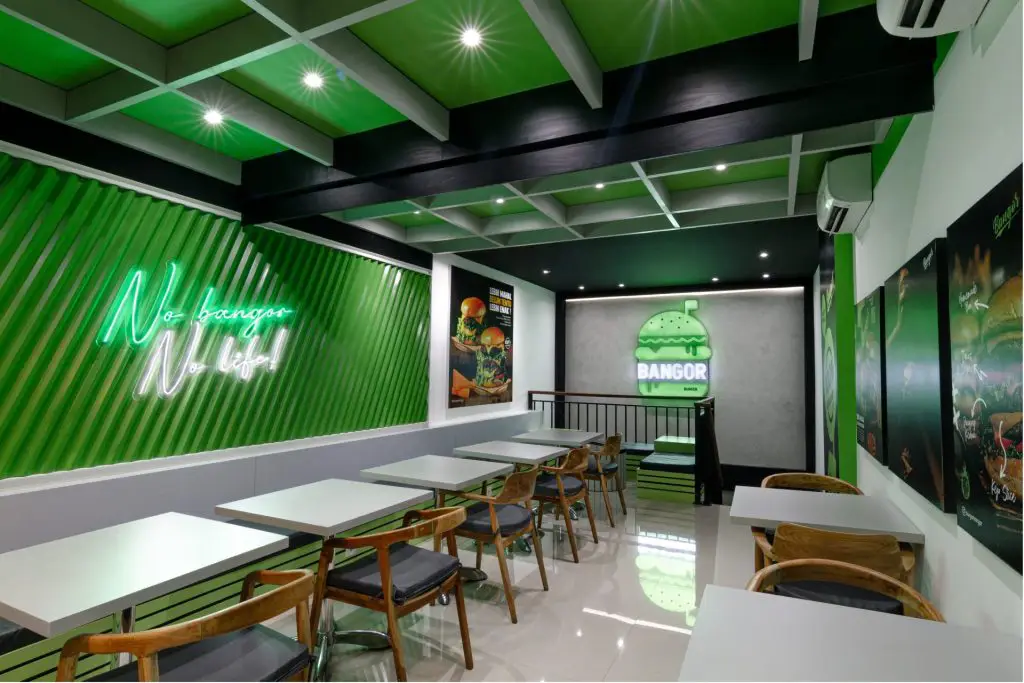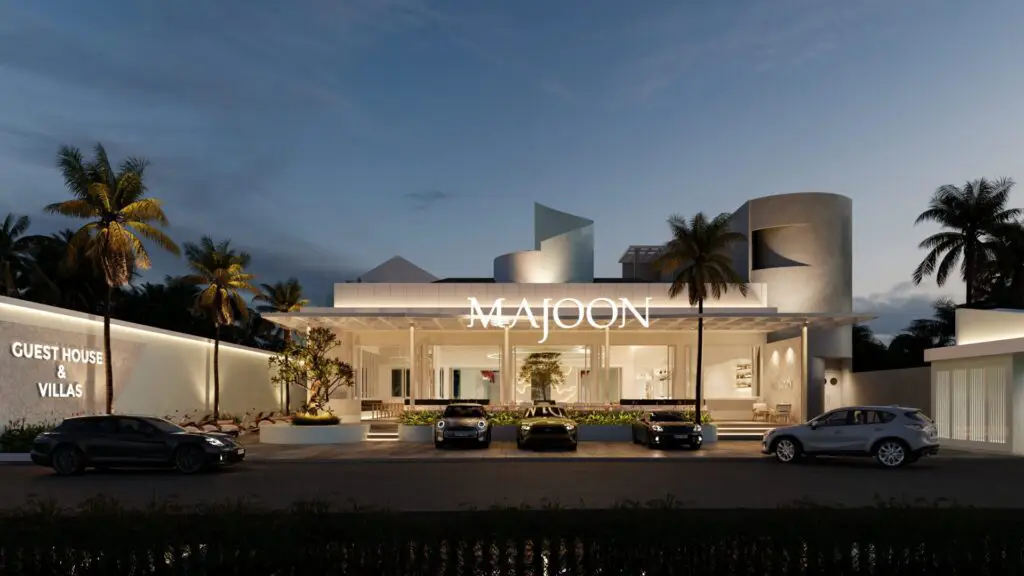
Branding through interior design - In today’s design-savvy world, interior design is far more than just arranging furniture and selecting colors. For businesses, especially in the hospitality, retail, and commercial sectors, the interior space is a strategic branding tool.
Physical environments are powerful storytellers, they speak volumes about what a brand stands for, what it values, and how it wants to be perceived.
To tackle that part, Manon, as an architecture and interior firm based in Bali, will explore five key ways your businesses can master the art of branding through interior design to create immersive and identity-rich spaces for everyone.
Let's look into this!
1. Start With Brand Identity as the Design Blueprint
Every successful design begins with a deep understanding of the brand itself. From the brand's tone of voice to its mission and personality, these attributes must be the foundation of the spatial concept.
For instance, a brand that radiates confidence and innovation may lean into bold layouts, sculptural lighting, or cutting-edge materials. Meanwhile, a wellness-focused brand may choose organic forms, natural hues, and soft lighting.
Why is branding through interior design essential?
-
- First impressions shape perception
- Design communicates identity
- Every corner should speak your values, from furniture to lighting, and every detail should subtly echo your brand story.
- Spaces can build emotional connections
- Tailored design supports brand goals.
- A community-driven brand might use cozy seating, local artwork, and storytelling corners.
- An innovation-focused brand may favor open, tech-savvy layouts that foster collaboration.
However, don’t overdo it, overloading the space with branding can feel forced or inauthentic. So, before you begin, we recommend you to work with experts. Professional designers like Manon Design Studio. We are here to help translate your brand essence into a space that feels just right.
Core Value: From Logo to Layout
Consistency is crucial. A logo might appear on digital platforms, but its essence should echo through the physical space as well.
If your business is a minimalist brand, you might embrace clean lines and neutral tones, while a luxurious brand may incorporate rich textures and refined details. Through this detail, from the entrance to the restrooms, every touchpoint is an opportunity to express branding through interior design.
2. Leverage Signature Color Palettes and Materials

When we think about branding, we usually picture logos, websites, or product packaging. But there is one thing that often gets overlooked, the space where your brand lives.
In commercial interior design, your physical environment is part of your brand voice, too. It is not just about looking good, it is about making people feel something the moment they walk in. This is what we call branding through interior design.
Why do color and material matter more than you think?
a. Colors Evoke Emotion
Warm earth tones can make a space feel grounded and calming, while bold colors can energize and excite.
b. Materials Speak Volumes
Soft textures say comfort. Polished metals suggest modernity. Natural wood? It whispers warmth and authenticity.
c. Signature Hues Reinforce Your Identity
Integrating your brand’s palette into furniture, finishes, or even ceiling details creates consistency and immediate recognition.
Moreover, ambience is everything…
No matter the industry, a space needs to do more than function, it needs to feel right. Here are a few examples you can draw inspiration from:
- Lighting sets the tone, bright and focused for productivity, soft and ambient for relaxation.
- Textures can invite touch and comfort.
- Furniture placement affects how people move and interact.
- Color palettes create emotional cues and moods.
- Layout and flow guide visitors through a purposeful journey.
In short...
Your space is never just a backdrop, it is a living part of your brand. When your interiors reflect your values, your customers do not just see your brand, they also feel it. And those feelings are what build loyalty and long-term connection.
Core Value: Design That Resonates
Materials are not merely functional, they speak.
For instance, wood communicates warmth and tradition, while stainless steel might imply efficiency and modernity. A sustainable fashion label could use reclaimed wood or recycled materials to reinforce eco-consciousness, while a premium skincare brand might highlight glossy marble for purity and sophistication.
These subtle choices help tell a cohesive story through branding through interior design. Whether it is a retail store, an office, or a boutique café, interior design can help evoke the right emotions from the right audience, such as:
a. For Health and Wellness Brands
Use open layouts, natural daylight, calming tones, and organic materials to promote peace and well-being.
b. For Youth-Focused Brands
Play with modern furniture, vibrant colors, and interactive design features that invite play, exploration, and creativity.
c. For Fashion and Lifestyle Brand
Choose bold colors, sculptural or artistic displays, and contemporary textures to stay on-trend and visually compelling.
3. Use Space Planning to Reflect Brand Purpose

Another effective branding through interior design concept is using space planning to reflect your brand. Spatial design is not just about filling a floor plan, it is about curating experiences.
Core Value: Purpose-Driven Flow
A thoughtful flow is essential for creating user journeys that align with your brand goals.
For instance:
- Brands that value collaboration might opt for open-concept lounges and communal tables.
- Those emphasizing privacy and exclusivity could use private nooks or enclosed pods.
- In a clinic that values efficiency, clear wayfinding and streamlined check-in counters speak volumes.
- A cafe promoting community might have cozy, shared seating zones.
Strategic zoning not only supports operations but reinforces the emotional and functional values behind the brand.
4. Incorporate Storytelling Through Design Elements
Design is a powerful medium for storytelling. Every material, detail, and feature within a space can serve as a visual chapter of your brand’s journey.
For brands with a rich heritage, displaying archival photos, key milestones, or timelines can beautifully celebrate the past. On the other hand, modern startups might lean into interactive elements or digital storytelling to spark engagement and connection.
Telling your brand’s story through space not only captures attention, it builds trust. Thoughtful visual narratives help communicate your mission, values, and identity in a way that feels authentic.
Consider incorporating these for branding through interior design:
- Memorabilia
- Hosting guided tours
- Creating dedicated storytelling zones
They help transform casual visits into meaningful brand experiences, nurturing connection and loyalty along the way.
Core Value: Bringing the Brand to Life
Wall art can represent values or local roots, while architectural motifs may symbolize progress or stability. Ultimately, branding through interior design must be both visual and visceral.
For example:
An eco-conscious skincare brand could design its store using reclaimed wood, recycled glass, and natural stone to reflect its sustainability values. Informational plaques beside each design element can tell the story behind the materials like where the reclaimed wood came from or how the lighting reduces energy consumption.
Also Read: RTRW’s Role in Bali Property: Beyond Strategic Location
5. Prioritize User Experience and Emotional Branding

Great design evokes feelings. No matter if it is serenity, excitement, trust, or nostalgia, emotional branding is what makes a space unforgettable. Tapping into the five senses; sight, sound, scent, touch, and even taste in some cases creates a rich, immersive atmosphere.
Core Value: Make It Memorable
Subtle scent branding can enhance mood and recall, while curated playlists set tone and rhythm. Soft textures underfoot, the warmth of natural light, or even the acoustic design of a space can all influence how a customer perceives the brand. These experiential elements are where branding through interior design truly shines.
Also Read: Facade Renovation Boosts Cening Bagus Brand Value
Interior design is more than decorating a space, it is about shaping perception and building identity. Businesses that embrace branding through interior design are investing in far more than aesthetics, they are crafting experiences, telling stories, and cultivating long-term brand loyalty. Every material, color, layout, and sound contributes to the larger narrative of who the brand is.
For every brand seeking to elevate your space into a reflection of your purpose, Manon Design Studio offers an expert hand. Based in Bali, Indonesia, and founded in 2014 by architect Brahasata Indra, Manon specializes in architecture and interior design that harmonize nature and people.
Guided by the mantra "Nature Inspired, Brand Defined," we believe in the power of thoughtful master planning and human-centered spaces. Let Manon Design Studio transform your brand through intentional, beautiful, and sustainable design.
